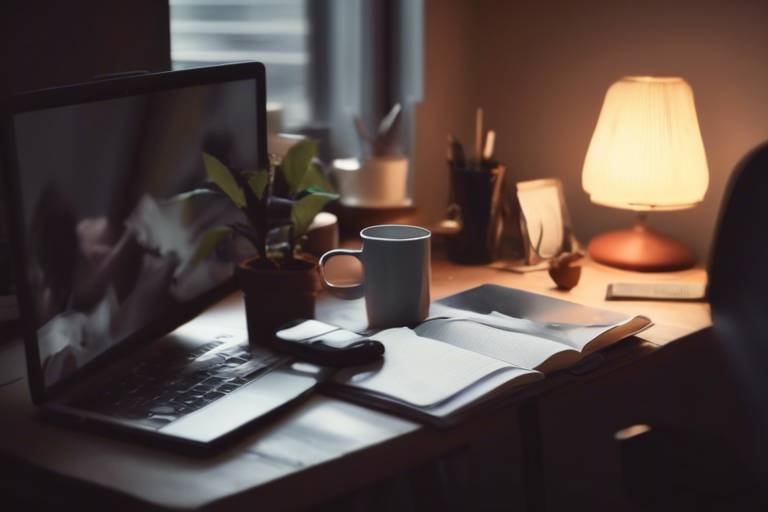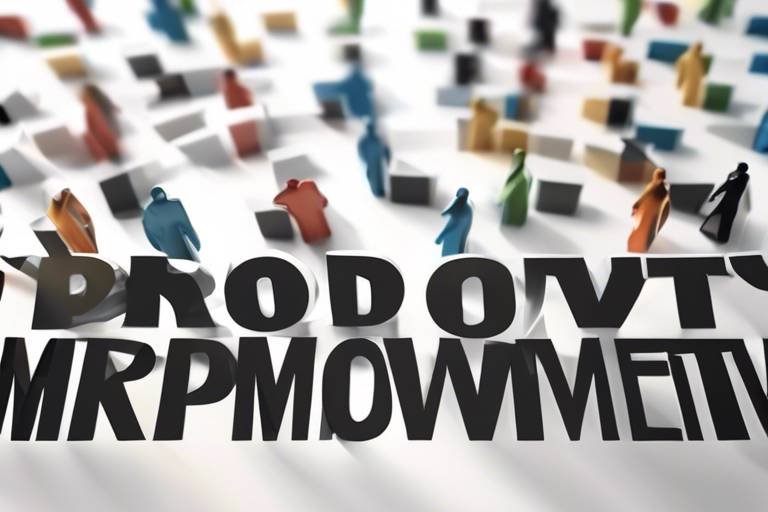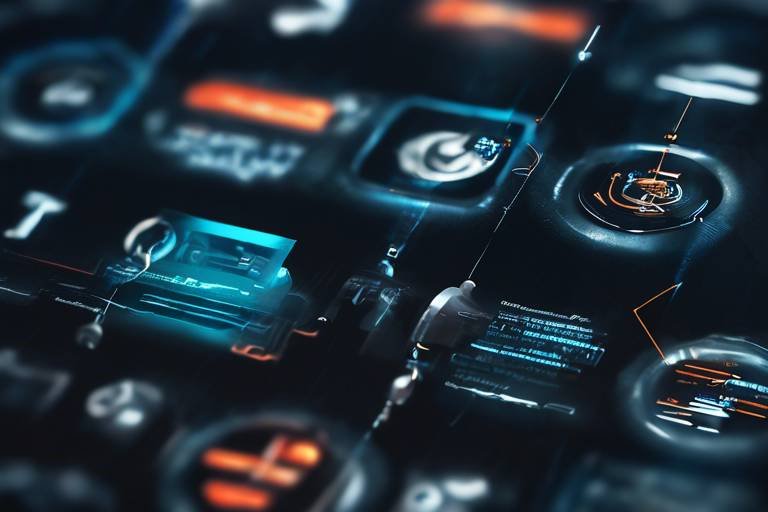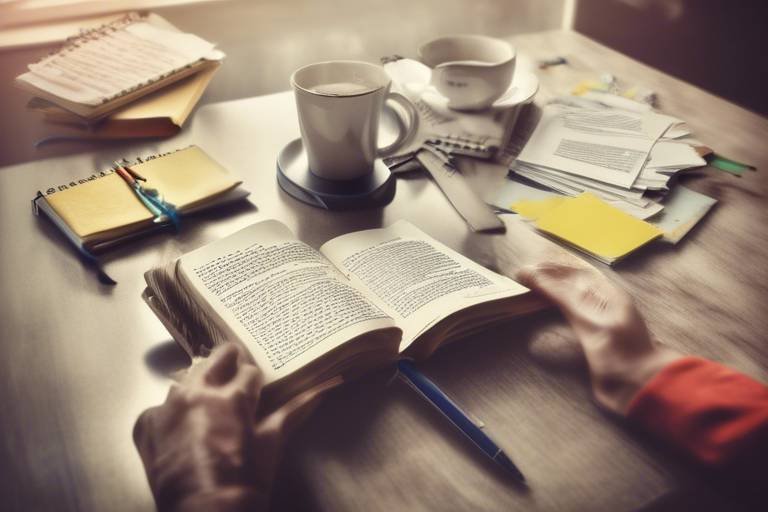Techniques for Managing Interruptions and Distractions
Managing interruptions and distractions is crucial for maintaining productivity and focus in various environments. By implementing effective strategies, individuals can navigate through disruptions and stay on track with their tasks. Whether at work or in personal settings, being aware of common interruptions is the first step towards finding solutions to combat them.
Setting clear priorities is key to minimizing the impact of interruptions on daily tasks. By establishing clear goals and priorities, individuals can better manage their time and energy, ensuring that interruptions do not derail their progress. Creating a structured routine further enhances productivity by reducing the likelihood of disruptions and maintaining concentration.
Utilizing time management tools such as calendars, to-do lists, and apps can help in organizing tasks and allocating time effectively amidst interruptions. These tools provide a systematic approach to task management, allowing individuals to stay focused and prioritize their work efficiently.
Implementing physical barriers in the workspace can also aid in minimizing interruptions. Designing a distraction-free environment and using physical barriers can create a conducive space for concentration, enabling individuals to work without being constantly disrupted.
Practicing mindfulness techniques is another effective way to manage interruptions and distractions. By adopting mindfulness practices, individuals can enhance their awareness and concentration, leading to better management of disruptions. Engaging in deep breathing exercises can help calm the mind and refocus attention when faced with interruptions, while visualizing task completion can maintain motivation and mental clarity.

Identifying Common Interruptions
Effective strategies to stay focused and productive in the face of interruptions and distractions in various environments.
Recognizing the typical disruptions that can hinder productivity and focus in work and personal settings is crucial for implementing effective strategies. Common interruptions include:
- Unexpected phone calls and messages
- Co-worker interruptions and office chatter
- Email notifications and social media distractions
- Technical issues and equipment malfunctions
By identifying these common interruptions, individuals can proactively address them and minimize their impact on daily tasks and projects.
Establishing clear goals and priorities is essential to managing interruptions effectively. By defining what needs to be accomplished and setting specific objectives, individuals can focus their attention on high-priority tasks and minimize distractions that may arise.
Implementing a structured daily schedule and workflow can significantly reduce the likelihood of interruptions. By allocating specific time blocks for different tasks and establishing a routine, individuals can maintain concentration and productivity throughout the day.
Leveraging time management tools such as calendars, to-do lists, and productivity apps can help individuals organize their tasks and allocate time effectively. These tools enable individuals to prioritize their work and stay on track even when interruptions occur.
Designing a distraction-free workspace and using physical barriers, such as noise-canceling headphones or closed doors, can help minimize interruptions and create an environment conducive to focus and productivity.
Adopting mindfulness practices can enhance awareness and concentration, making it easier to manage interruptions and distractions. Mindfulness techniques include:
- Deep breathing exercises to calm the mind
- Visualizing task completion to maintain motivation
By incorporating these techniques into daily routines, individuals can improve their ability to stay focused amidst interruptions.
Engaging in deep breathing techniques can help individuals calm their minds and refocus their attention when faced with interruptions or distractions. By taking deep, intentional breaths, individuals can center themselves and regain focus on the task at hand.
Using visualization to imagine the successful completion of tasks can boost motivation and mental clarity. By visualizing the end goal, individuals can stay motivated and overcome interruptions more effectively, staying on track with their tasks.
Have questions about managing interruptions and distractions? Check out some commonly asked questions below:
- How can I minimize interruptions from co-workers in an open office environment?
- What are some effective ways to maintain focus when working from home?
- Are there specific apps or tools that can help with time management and productivity?
- How can mindfulness practices improve my ability to manage distractions?

Setting Clear Priorities
When it comes to managing interruptions and distractions effectively, setting clear priorities is key. By establishing clear goals and priorities, you can minimize the impact of disruptions on your daily tasks and projects. Think of your priorities as a roadmap that guides you through your day, helping you stay focused and on track.
One effective way to set clear priorities is to categorize your tasks based on their importance and urgency. This can help you determine which tasks require immediate attention and which can be tackled later. By prioritizing your tasks, you can ensure that you are focusing your time and energy on the most critical activities.
Creating a daily to-do list can also be a helpful tool in setting clear priorities. Write down all the tasks you need to accomplish for the day and rank them in order of importance. This can provide you with a clear outline of what needs to be done and help you stay organized and focused throughout the day.
Additionally, it's essential to regularly review and reassess your priorities. As new tasks and distractions arise, you may need to adjust your priorities to stay on track. By staying flexible and adaptable, you can effectively manage interruptions and maintain productivity.

Creating a Structured Routine
Effective strategies to stay focused and productive in the face of interruptions and distractions in various environments.
Recognizing the typical disruptions that can hinder productivity and focus in work and personal settings.
Establishing clear goals and priorities to minimize the impact of interruptions and distractions on daily tasks and projects.
Implementing a daily schedule and workflow to reduce the likelihood of interruptions and maintain concentration.
Creating a structured routine is like building a sturdy foundation for a house. Just as a solid foundation supports the entire structure, a well-planned routine provides stability and organization to your day. By setting specific times for different tasks and activities, you create a roadmap that guides you through the day, helping you stay on track and focused.
Imagine your routine as a carefully crafted puzzle where each piece fits perfectly to create a complete picture. Each task you allocate a specific time slot for is like a puzzle piece that contributes to the overall productivity and efficiency of your day. With a structured routine, you can ensure that every minute is utilized effectively, leaving no room for unnecessary interruptions or distractions.
Moreover, a structured routine acts as a shield against the chaos of interruptions. By knowing exactly what you should be doing at any given moment, you are less likely to veer off course when faced with unexpected disruptions. It provides a sense of control and direction, enabling you to navigate through your day with purpose and clarity.
Leveraging tools such as calendars, to-do lists, and apps to organize tasks and allocate time effectively amidst interruptions.
Designing a distraction-free workspace and using physical barriers to minimize interruptions and maintain focus.
Adopting mindfulness practices to enhance awareness and concentration, enabling better management of interruptions and distractions.
Engaging in deep breathing techniques to calm the mind and refocus attention when faced with interruptions or distractions.
Using visualization to maintain motivation and mental clarity, aiding in overcoming interruptions and staying on track with tasks.
Stay tuned for answers to common questions about managing interruptions and distractions effectively.

Utilizing Time Management Tools
When it comes to managing interruptions and distractions effectively, utilizing time management tools plays a crucial role in staying organized and on track with tasks. These tools not only help in structuring your day but also aid in prioritizing activities to ensure maximum productivity.
One of the most popular time management tools is the calendar, which allows you to schedule your tasks and appointments, providing a visual representation of your day. By allocating specific time slots for each activity, you can better manage interruptions and stay focused on the task at hand.
To-do lists are another essential tool that helps in organizing your tasks and keeping track of what needs to be done. By creating a list of tasks in order of priority, you can ensure that important activities are completed first, minimizing the impact of interruptions on your productivity.
Additionally, there are various apps available that can assist you in managing your time more efficiently. These apps often come with features such as reminders, task categorization, and progress tracking, allowing you to stay organized and focused amidst interruptions.

Implementing Physical Barriers
When it comes to managing interruptions and distractions, implementing physical barriers can be a highly effective strategy to create a focused work environment. By designing a workspace that is free from external disturbances, individuals can minimize interruptions and maintain their concentration on tasks at hand.
Physical barriers can take various forms, such as noise-canceling headphones to block out surrounding sounds, dividing screens to create a private work area, or even setting up visual barriers like plants or curtains to create a sense of privacy and separation from distractions.
These barriers not only help in reducing external interruptions but also serve as a visual cue to others that you are engaged in focused work, signaling that you should not be disturbed unless absolutely necessary.
Moreover, physical barriers can also help in organizing your workspace effectively, ensuring that essential tools and materials are within reach while non-essential items are stored away to minimize clutter and potential distractions.
By strategically implementing physical barriers in your work environment, you can create a conducive space that promotes productivity, minimizes interruptions, and helps you stay on track with your tasks and projects.

Practicing Mindfulness Techniques
Mindfulness techniques are powerful tools that can help individuals enhance their focus and concentration in the midst of interruptions and distractions. By practicing mindfulness, individuals can cultivate a sense of awareness and presence in the current moment, allowing them to better manage external disruptions.
One effective mindfulness technique is deep breathing exercises. By engaging in deep, intentional breaths, individuals can calm their minds and refocus their attention when faced with interruptions. Deep breathing helps in centering oneself and regaining mental clarity, enabling a more focused approach to tasks at hand.
Visualizing task completion is another valuable mindfulness practice. By visualizing the successful completion of a task or project, individuals can maintain motivation and mental clarity even in the face of interruptions. This technique helps in staying on track with tasks and overcoming distractions that may arise.
Overall, practicing mindfulness techniques can significantly improve one's ability to manage interruptions and distractions effectively. By incorporating these practices into daily routines, individuals can enhance their focus, productivity, and overall well-being.

Deep Breathing Exercises
Deep breathing exercises are a powerful tool to calm the mind, reduce stress, and refocus attention when faced with interruptions or distractions. By taking slow, deep breaths, you can activate the body's relaxation response, which helps in clearing the mind and enhancing mental clarity. These exercises can be done anywhere, making them a convenient and effective technique for managing interruptions and staying focused.
One simple deep breathing exercise involves inhaling deeply through your nose, allowing your abdomen to expand fully, and then exhaling slowly through your mouth. Repeat this process several times, focusing on the sensation of your breath entering and leaving your body. This practice not only helps in regaining focus but also promotes a sense of calmness and mindfulness.
Deep breathing exercises can be integrated into your daily routine, acting as quick resets during moments of distraction or overwhelm. By incorporating these techniques regularly, you can train your mind to respond to interruptions with a sense of composure and resilience, ultimately improving your productivity and concentration.

Visualizing Task Completion
Visualizing task completion is a powerful technique that involves mentally picturing the successful accomplishment of a task before actually completing it. By visualizing the task completion, individuals can boost their motivation, enhance focus, and maintain a clear direction towards achieving their goals. This practice helps in programming the mind for success and overcoming potential interruptions or distractions that may arise during the task execution.
Frequently Asked Questions
- What are some common interruptions that can affect productivity?
Common interruptions include phone calls, emails, social media notifications, co-worker interruptions, and environmental distractions like noise or clutter.
- How can I set clear priorities to manage interruptions?
To set clear priorities, identify your most important tasks, create a daily to-do list, allocate specific time slots for each task, and focus on completing high-priority items first.
- What tools can I use for effective time management?
Tools such as digital calendars, task management apps, and time tracking software can help you organize your schedule, set reminders, and allocate time efficiently to manage interruptions.
- How can mindfulness techniques help in managing distractions?
Mindfulness techniques like deep breathing exercises and visualization can improve focus, reduce stress, and enhance awareness, enabling you to better handle interruptions and stay on track with tasks.



















